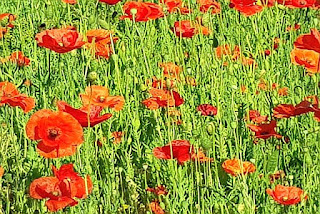 |
| Travel is eye-opening and life-altering but it is also hard work Be savvy and save hassles (Courtesy: Pixabay) |
Not all
tips suit the needs of every traveler, but those that work best are clever and
can be used with minimal inconvenience. Here are some more suggestions we have
discovered at Communities Digital News:
Lots of Uses for Wet Wipes:
A few small packets of individual antibacterial wipes can be
invaluable. They’re convenient when you
have no running water available or for cleaning small cuts. Not only that, the alcohol from the wipes
helps stop the itching when you rub them on insect bites.
 |
| Pack smart, pack light (Photo: Public Domain) |
Pack Your Carry-on Strategically:
Sometimes it's impossible to avoid checking luggage, and on
international flights checking your bags can save added hassles. Airlines have become increasingly stricter
about the size and weight of carry-ons.
When you pack, put any important stuff in a plastic bag and place it in
the front pocket of your carry-on. When
you get to the gate, if you must check your bag, you can simply pull out the
smaller plastic bag and board.
 |
| Old stickers make great lint removers (Photo: Public Domain) |
Recycle Hotel Freebies:
Once those tiny bottles you bring home from the hotel are empty, refill
them with your favorite brand of shampoo, hair conditioner and shower gel instead of buying travel-size containers at
the drug-store. Toss them, along with
your other small items, into a medium-sized Ziploc bag and you’re ready to
go. The clear plastic also lets you find
things quickly and easily.
Pack Dirty Clothes in Hotel
Laundry Bags: Hotels that offer dry-cleaning or laundry
services usually provide guests with plastic drawstring bags for their dirty
clothes that you can use to haul your laundry home. Just fill the bag, put it on the bed, and sit
on it. Your body weight will force the
air out of the bag and then you can tie it closed with the drawstring.
Use Your Shoes to Get Through
Airport Security More Quickly: To speed up the
X-ray process, empty the contents of your pockets into your shoes and place
them on the conveyor belt. At the other
end, you can just pick up your shoes and move on to a less congested area to
put everything back in place and slip on your shoes.
 |
| Save magazine perfume ads to freshen up your room (Courtesy: Pixabay) |
Save Perfume Ads for Your Next
Cruise: Those smelly magazine inserts may be annoying
at home, but they can really come in handy at sea. Use them to freshen up the air in your stateroom
bathroom or them in the closet or dresser drawers.
Save Your Old Prescription
Glasses: Whenever you get a new pair of
eyeglasses, relegate the old ones to your luggage, along with an inexpensive
repair kit from the drugstore. If
something happens while you’re away from home, you may be able to make the
repairs yourself. If they’re beyond
hope, at least you'll have a backup pair to get you through the rest of the
trip.
Put Freebie Key Chains to Good
Use: Why not take those seemingly useless key
chains that are used as advertising gimmicks and attach them to the ends of
your luggage zippers. This makes it
easier to work the zippers and, as a bonus, helps identify your luggage on
airport carousels.
 |
| Sounds silly but make sure your documents are in order (Courtesy: Pixabay) |
 |
| A little planning can make a huge difference in a travel experience (Photo: Public Domain) |
Fraud Protection:
If a credit card(s) is stolen or lost, call the three national credit
reporting organizations and the Social Security fraud line number immediately
to place a fraud alert on your name. The
alert means that any company that checks your credit knows your information was
stolen, and they must contact you by phone to authorize new credit. Following are the contact numbers:
Equifax
-- 1
800 525 6285
Experian
-- 1
888 397 3742
Trans
Union -- 1
800 680 7289
Social
Sec Admin Fraud) -- 1 800 269 0271
Traveling
without hassles is hard work. The more you can do to simplify the process, the
more enjoyable your experience will be.













































